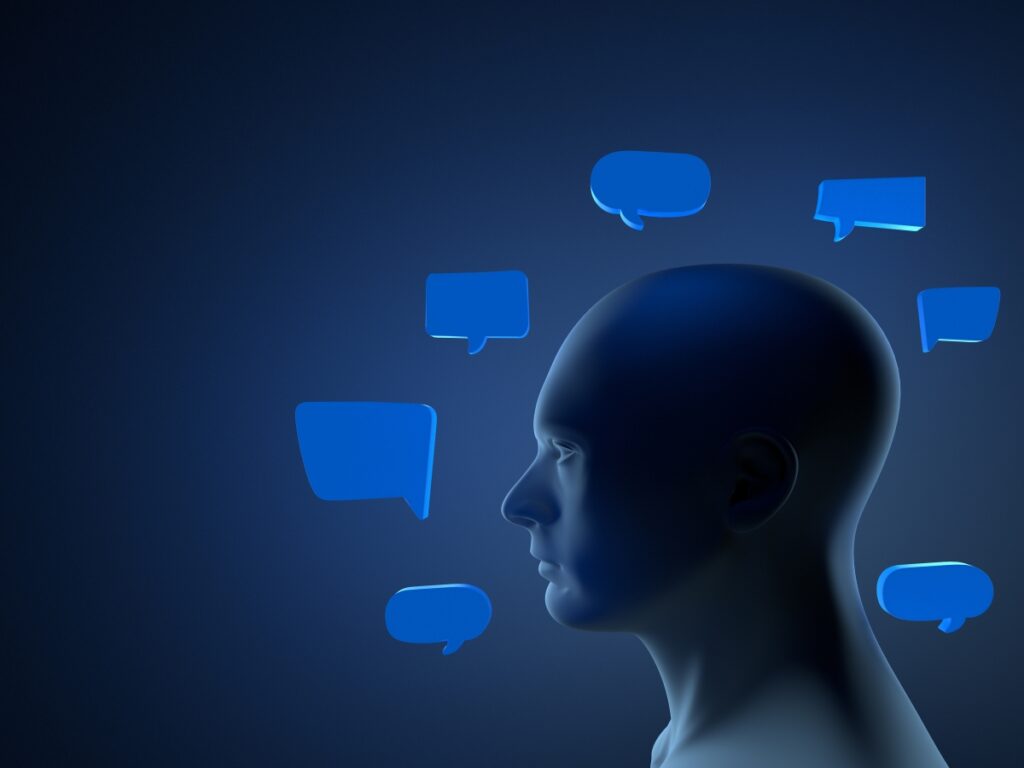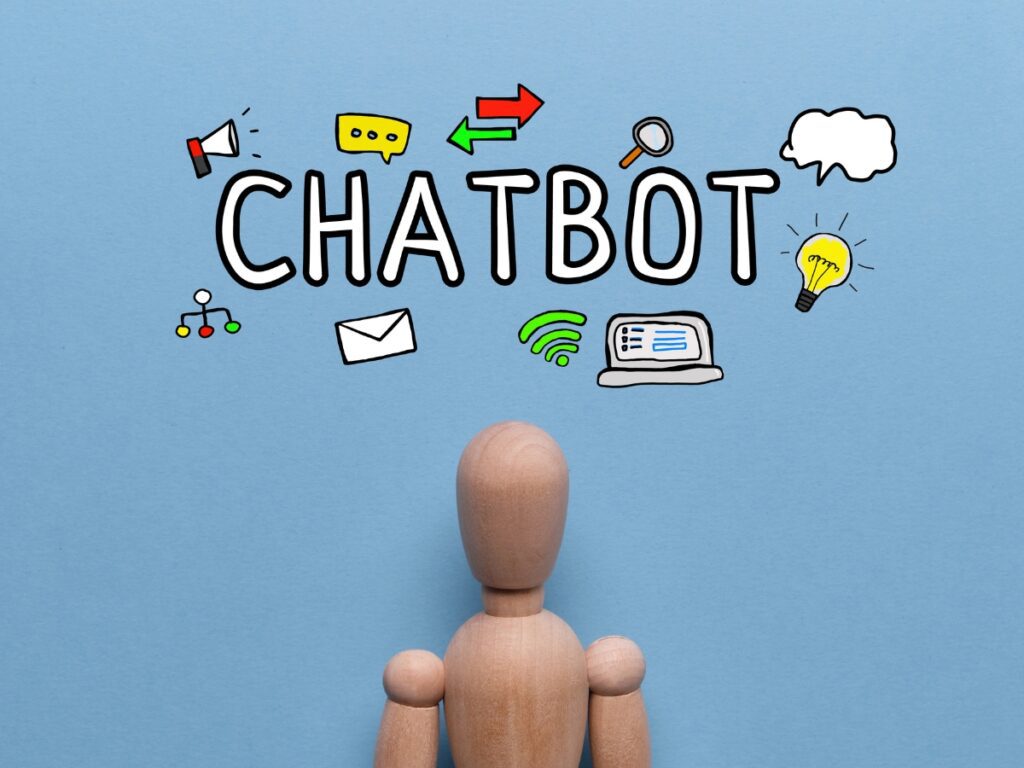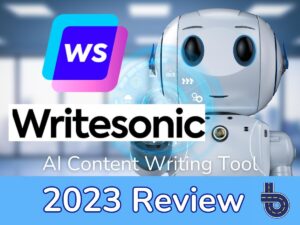This guide explores chatbot analytics, a critical component for gauging and refining the efficiency and effectiveness of chatbot interactions in today’s digital age. We’ll unpack the nuances of these analytics, explore their multifaceted benefits, and showcase how they can be instrumental in fine-tuning chatbot deployments for maximum impact.
Quick Snapshot – For Swift Browsers:
- Chatbot analytics provide a granular view into the performance metrics of chatbot engagements, capturing vital data points like user interaction patterns, response effectiveness, and session durations. These metrics are instrumental in deciphering user preferences, identifying bottlenecks, and highlighting opportunities for chatbot enhancements. Through diligent observation and interpretation of these analytics, organizations can craft more engaging, efficient, and valuable chatbot experiences for their users.
- In a world where chatbot deployments are becoming ubiquitous, chatbot analytics stand as an indispensable ally. They bridge the gap between user expectations and chatbot offerings, ensuring a synergy that drives satisfaction, retention, and business growth. With the insights from robust analytics, businesses are better positioned to stay ahead, making informed decisions that resonate with their audience’s evolving needs.
Welcome to the eleventh Blue Lane Group article in the Best Chatbots for Customer Service: Blueprint for Success in 2023 series. These posts examine the essential chatbot topics of customer service automation, exploring how chatbots revolutionize interactions, enhance user satisfaction, and redefine the benchmarks for excellence in modern customer-centric businesses.

Table of Contents
Disclosure: The digital products mentioned in this article are highly regarded in the marketplace and are endorsed by the Blue Lane Group staff. We may earn a commission at no additional cost if you purchase through the provided links.

Introduction: A Deep Dive into Chatbot Analytics
The rapid emergence of digital communication tools, from Botanalytics to IBM Watson Analytics, signifies the growing importance of chatbots across various sectors. Understanding their performance is pivotal as these automated conversational tools become paramount for businesses.
Therefore, chatbot analytics emerges as the key to unlocking insights from millions of bot interactions. This guide will traverse the landscape of chatbot analytics, highlighting the paramount tools and their role in the ever-evolving realm of AI communication.
The Significance of Chatbot Analytics in 2023
As we venture deeper into 2023, businesses rely more on solutions like Dashbot and Rasa Analytics to gain a competitive edge in customer service. Now more than ever, chatbots serve as the frontline of digital communication.
But their success isn’t merely in deployment; it’s in optimization. And that’s where chatbot analytics comes into play. With tools like TARS Analytics and Stamurai Analytics, enterprises are equipped to understand user behaviors, pinpoint areas of enhancement, and refine chatbot strategies.
In today’s hyper-digital age, chatbot analytics is not just significant—it’s essential.
Metrics’ Role in Enhancing Chatbot Effectiveness
Metrics are the guiding stars of any analytics platform, be it Botpress Analytics or Dialogflow Analytics. In the realm of chatbots, these metrics provide invaluable insights. They quantify a chatbot’s performance, from responsiveness to complex interaction handling.
Tools like Mixpanel are incorporated to provide businesses with insights into chatbot strengths, areas for improvement, and overall effectiveness. By leveraging these metrics, companies can harness the full potential of platforms like Chatbase, ensuring chatbots operate and excel, meeting both business and user expectations head-on.

Unraveling 9 Key Chatbot Analytics Metrics
Understanding key analytics metrics is non-negotiable for those keen on optimizing their chatbot’s performance. Let’s unwrap nine of them:
- Total Interactions: This reveals the volume of user engagements, acting as a primary indicator of chatbot accessibility and reach.
- Average Chat Duration: A measure of how long users interact, hinting at the depth and quality of conversations.
- Goal Completion Rate: Gauges the chatbot’s efficacy in fulfilling user intents or achieving specific tasks.
- Missed Utterances: These are instances when the chatbot fails to comprehend user inputs, which is crucial for refining language models.
- Human Takeover Rate: Indicates how often human intervention is required, shedding light on the chatbot’s autonomous capabilities.
- Customer Satisfaction Score (CSAT): Derived from user feedback, it directly measures user satisfaction levels.
- Retention Rate: Assesses how often users return, hinting at chatbot value and user loyalty.
- Chat Handoff & Fallback: Shows the balance between AI-driven interactions and those requiring human touchpoints.
- Leads Captured: This metric tracks the conversion of interactions into potential sales leads for sales-oriented chatbots.
Total Interactions: Measure Engagement Levels
In the vast world of chatbot analytics, total interactions serve as an essential metric. These interactions represent the number of times users engage with a chatbot, providing businesses with a clear picture of their bot’s reach and popularity. Using Botanalytics, companies can accurately track these interactions, understanding patterns and gauging bot engagement levels.
While tools like Dashbot can give in-depth insights into conversation paths, platforms like Rasa Analytics further enable firms to differentiate between meaningful interactions and mere touchpoints. Understanding total interactions becomes paramount for any organization aiming to boost user engagement.

Unleashing the Power of Average Chat Duration
Average chat duration is a significant metric, revealing the length of user-chatbot interactions. A longer duration might signify that users find the chatbot informative and engaging, while a shorter one might indicate potential issues.
Botpress Analytics offers an integrated view of this metric, helping businesses decipher the depth of their chatbot conversations. IBM Watson Analytics goes further by correlating chat duration with user satisfaction metrics.
Firms can use tools such as TARS Analytics to refine their chatbot’s conversational capabilities, ensuring users remain engaged optimally.
Goal Completion Rate: The Path to Efficiency
The ultimate testament to a chatbot’s efficacy is its goal completion rate. This metric represents the percentage of interactions where the chatbot successfully addressed a user’s query or intent. With its deep learning approach, Stamurai Analytics offers insights into how well chatbots meet user objectives.
Platforms like Dialogflow Analytics provide a clear picture of intent recognition, helping businesses refine their bots to increase this rate. Leveraging Mixpanel can further enhance these insights by providing funnel visualization, allowing companies to identify where chatbots excel and where they fall short in goal completion.
Addressing Missed Utterances for Enhanced UX
Missed utterances instances where a chatbot fails to understand or address a user’s input, are pivotal metrics to consider. They directly affect user experience, often leading to user frustration. Chatbase offers a unique feature that highlights these missed opportunities, enabling businesses to refine their chatbot’s linguistic capabilities.
Tools like Botanalytics and Rasa Analytics allow companies to delve deeper into conversation paths, identifying the precise moments of missed utterances. By addressing these issues head-on, organizations can enhance user experience, ensuring smoother and more efficient chatbot interactions.
Human Takeover Rate & Chatbot Independence
The human takeover rate indicates the frequency with which human intervention is needed during a chatbot’s interaction. A high speed might suggest that the chatbot struggles with specific user queries or intents.
Businesses can use Dialogflow Analytics to pinpoint the exact triggers for these interventions, allowing them to refine their chatbot’s knowledge base. On the other hand, Stamurai Analytics emphasizes deep learning insights, guiding organizations toward creating more independent and self-sufficient chatbots.
IBM Watson Analytics offers an integrated approach, combining user feedback with intervention metrics to continuously improve chatbot autonomy.

Customer Satisfaction Score’s (CSAT) Influence
CSAT is a critical metric in the chatbot world, representing user satisfaction levels after an interaction. A high CSAT indicates successful user engagements, while low scores hint at underlying issues. Botpress Analytics provides real-time tools for gauging CSAT, allowing businesses to react swiftly to user feedback.
Dashbot takes it further by correlating CSAT scores with specific conversation paths, highlighting areas of excellence and potential bottlenecks. Platforms such as Rasa Analytics emphasize user feedback loops, ensuring that user sentiments are continuously monitored and addressed, driving overall satisfaction upwards.
Retention Rate: Securing User Loyalty
The retention rate showcases the percentage of users who return to interact with the chatbot after an initial engagement. High retention suggests a valuable and engaging chatbot experience. With Botanalytics, businesses can visualize retention metrics over time, identifying patterns and user loyalty trends.
TARS Analytics offers insights into user journeys, correlating retention with specific interaction paths. Mixpanel, when appropriately integrated with chatbot platforms, allows companies to dive deep into session data, clarifying what keeps users returning and areas that might deter them.

Chat Handoff & Fallback: Balancing AI and Humans
Chat handoff refers to the seamless transition from chatbot to human agents when needed, while fallback mechanisms ensure user queries don’t go unanswered. Chatbase provides detailed visualization tools, assisting businesses in optimizing handoff points for the best user experience.
IBM Watson Analytics excels in monitoring these handoffs, correlating them with user satisfaction and intent recognition. On the other hand, platforms like Stamurai Analytics offer deep learning insights into the entire process, helping companies strike the perfect balance between AI autonomy and human intervention.
Leads Captured: Converting Interactions to Sales
One of the pivotal metrics in chatbot analytics is “Leads Captured.” It translates to the number of potential customers identified during chatbot interactions. An optimized chatbot doesn’t just answer queries but also identifies and nurtures potential sales opportunities.
TARS Analytics offers comprehensive tools to track leads, providing metrics on successful conversions and pinpointing chatbot interactions that drive sales. Mixpanel can be integrated seamlessly with chatbot platforms to provide an in-depth analysis of user behavior, helping businesses recognize patterns that lead to sales conversions.
Rasa Analytics optimizes conversation paths, allowing enterprises to harness chatbot interactions for lead generation and nurturing.

10 Essential Tools for Insightful Chatbot Analytics
In the burgeoning world of chatbots, data-driven decisions are imperative for success. Analytics tools empower businesses to dissect, analyze, and refine chatbot operations. Here’s a quick rundown of ten indispensable tools for comprehensive chatbot analytics:
- Botanalytics: Specializes in user interaction insights, improving chatbot engagement and performance.
- Botpress Analytics: Integrated within Botpress, it tracks chatbot-user interactions and measures satisfaction levels.
- Chatbase: A Google venture providing actionable metrics, visualization tools, and optimization suggestions.
- Dashbot: Prioritizes conversational analytics to fine-tune chatbot responses and overall functionality.
- Dialogflow Analytics: A Google tool emphasizing user query insights, accuracy metrics, and session contexts.
- IBM Watson Analytics: A holistic approach to monitoring chatbot interactions, integrating user feedback and intent recognition.
- Mixpanel: A robust platform that, when integrated, offers deep chatbot-user interaction analytics.
- Rasa Analytics: Specializes in dissecting conversation paths and user feedback for bot refinements.
- Stamurai Analytics: Leverages deep learning to provide insights that enhance chatbot interactions.
- TARS Analytics: Focused on user journeys, tracking interactions, intent paths, and conversions.
Bot Analytics: Your Partner for User Interaction Insights
Botanalytics stands out as a dedicated platform for chatbot-centric analytics. Diving deep into user interactions provides actionable insights that improve chatbot engagement and overall performance.
Whether aiming to enhance user satisfaction or optimize conversation paths, Botanalytics offers tools tailored to these needs. Their visualizations make data interpretation straightforward, while their analytics engine identifies trends, bottlenecks, and opportunities. Botanalytics bridges the gap between raw data and informed decisions in chatbot analytics.

Botpress Analytics: Uncover Chatbot Interaction Secrets
Botpress Analytics is more than just an analytics tool; it’s a window into the intricate world of chatbot-user interactions. It seamlessly integrates with the Botpress platform, allowing businesses to monitor, analyze, and optimize real-time chatbot interactions.
Its ability to unravel intricate patterns sets it apart, ensuring businesses are always one step ahead in understanding their users. Whether gauging user satisfaction or tracking interaction trends, Botpress Analytics provides a holistic view, empowering businesses to refine their chatbot strategies for enhanced user experiences.
Chatbase: Visualize & Optimize Chatbot Performance
When we talk about holistic chatbot optimization, Chatbase inevitably stands out. As a Google product, it offers a blend of intuitive visualization tools, actionable metrics, and optimization suggestions tailored for chatbot performance.
Its primary strength lies in its ability to present complex data in easily digestible formats, assisting businesses in quick decision-making. From tracking user queries to understanding bottlenecks in chatbot interactions, Chatbase is designed to ensure that chatbots are responsive but also efficient and user-centric.
Dashbot: Conversational Analytics for Every Chatbot
Dashbot transcends traditional analytics, focusing exclusively on conversational analytics. Its strength lies in its granular insights into every dialogue, helping businesses refine chatbot responses and functionality. Its ability to monitor in real-time captures nuances of every interaction, be it positive user feedback or challenges in bot responses.
This level of detail means businesses can react immediately, tweaking their chatbot to offer optimal user experiences. Dashbot ensures that chatbots remain dynamic, responsive, and user-focused in a world where every interaction counts.

Dialogflow Analytics: Queries, Accuracy, & Contexts
Dialogflow Analytics, integrated within Google’s Dialogflow platform, epitomizes in-depth chatbot analytics. It focuses on three key areas: user queries, recognition accuracy, and session contexts. By capturing and analyzing these metrics, businesses clearly understand where their chatbot excels and where it needs refinement.
It provides insights into frequently asked queries, the accuracy of chatbot responses, and the context in which interactions occur. This trifecta of insights empowers businesses to design chatbots that are accurate and contextually relevant, ensuring elevated user satisfaction.
IBM Watson: User Feedback & Intent Recognition Insights
In AI and chatbot technology, IBM Watson is a juggernaut. With its dedicated analytics, businesses can delve deep into user feedback and intent recognition nuances. This ensures that chatbots built on this platform are highly responsive and intuitive in understanding user needs.
For instance, intent recognition insights enable chatbots to determine what users genuinely want, ensuring accurate and relevant responses. Additionally, by examining user feedback, businesses can identify areas of improvement, ensuring that their chatbots evolve in tandem with user expectations.
With IBM Watson, companies can ensure that their chatbot strategies remain agile and user-centric.

Mixpanel: Deep Analytics for User Interaction Insights
Mixpanel is a comprehensive analytics tool widely known for its versatility, but its prowess doesn’t end with traditional metrics. When integrated with chatbot platforms, it becomes a powerhouse for understanding user interactions.
Whether tracking user paths, gauging interaction durations, or evaluating feedback, Mixpanel offers granular insights that help businesses refine their chatbot sequences. Its visual representations and deep analytics provide a holistic view of how users interact with chatbots, empowering businesses to tweak and optimize their bots for unparalleled user experiences.
Rasa Analytics: Conversation Paths & User Feedback
Rasa Analytics takes a unique approach, emphasizing the intricacies of conversation paths and user feedback. This tool, part of the broader Rasa ecosystem, allows businesses to map out conversational flows, highlighting where users are most engaged and pinpointing bottlenecks hindering smooth interactions.
Moreover, by focusing on user feedback, Rasa ensures businesses remain attuned to user sentiments, adjusting their chatbot functionalities accordingly. The primary strength of Rasa Analytics lies in its ability to offer enterprises a dual perspective: understanding the user journey while also ensuring the chatbot remains aligned with user needs and feedback.

Stamurai: Deep Learning Insights for Chatbot Refinement
In today’s technologically advanced era, deep learning has revolutionized how we handle and interpret data. Stamurai utilizes this innovative approach, integrating deep knowledge to provide invaluable insights for chatbot refinement.
By processing vast amounts of user interactions and feedback, Stamurai’s analytics harnesses the power of neural networks to derive patterns and trends that might be imperceptible through traditional methods. These insights enable businesses to make informed decisions, tweaking their chatbot functionalities for optimal performance. I
If you want to leverage the latest in AI and deep learning for your chatbot, Stamurai is a top-tier choice.
TARS Analytics: Track & Refine User Interaction Journeys
In the multifaceted world of chatbot analytics, TARS Analytics shines brightly. It offers robust tools that allow businesses to track user interaction journeys closely. By mapping out each step a user takes when interacting with a chatbot, TARS provides a clear visualization of the user’s experience.
This lets businesses identify high-engagement areas and potential pain points in real-time. Companies can refine their chatbots with TARS‘s actionable insights, ensuring seamless and intuitive user interactions. If tracking and refining user journeys is a priority, TARS Analytics is indispensable.

Enhancing Chatbot ROI with Analytics
The overarching goal for most businesses when deploying chatbots is to see a tangible return on investment (ROI). However, achieving this requires more than just setting up a chatbot; it demands continuous refinement and understanding of user interactions. Enter chatbot analytics.
By providing granular insights into user behaviors, preferences, and feedback, analytics tools enable businesses to enhance their chatbot’s performance, leading to increased user satisfaction, more efficient query handling, and, ultimately, a higher ROI.
Investing in premium analytics tools is not just a luxury but a necessity for businesses aiming to maximize their chatbot’s potential and profitability.
Deploying Analytics for Chatbot Performance Tuning
Chatbots, though automated, require consistent tuning to perform optimally. Here’s where deploying chatbot analytics becomes invaluable. By capturing real-time user interactions, feedback, and behaviors, chatbot analytics tools, like Mixpanel or Botpress Analytics, enable businesses to detect bottlenecks, misconceptions, and areas of friction.
This data serves as the foundation for performance tuning, allowing for the proactive enhancement of chatbot functionalities. By identifying and rectifying potential issues before they escalate, businesses can offer an increasingly streamlined user experience, driving satisfaction and ROI.
Real-Time Data: The Cornerstone of Chatbot Refinement
In the rapidly changing landscape of digital interactions, real-time data has become pivotal. When equipped with real-time analytics tools such as Chatbase or Dashbot, Chatbots can adapt instantaneously to user behaviors, trends, and feedback.
This immediacy allows for swift modifications, whether addressing misunderstood user intents or optimizing pathways for a better user experience. It’s akin to having a live pulse on user sentiment and behavior, ensuring that chatbots remain relevant, effective, and consistently refined. As chatbot technology evolves, the importance of real-time data in providing bot excellence will only grow.

FAQs: Navigating the Complex World of Chatbot Analytics
- Why are chatbot analytics essential?
- Analytics provide insights into user interactions, behavior, and feedback. This data is crucial for refining chatbots, enhancing user experience, and meeting business objectives.
- Which tool is best for real-time chatbot analytics?
- Tools like Rasa Analytics and TARS Analytics are renowned for offering real-time insights. However, the best tool often depends on specific business needs and chatbot functionalities.
- How often should I review chatbot analytics?
- For optimal performance, it’s advisable to monitor analytics regularly, with in-depth reviews conducted weekly or monthly, depending on user volume and business objectives.
How to Select the Best Chatbot Analytics Platform?
Selecting the ideal chatbot analytics platform can be daunting given the plethora of options available, like Botanalytics, Dashbot, or Mixpanel. Firstly, define your primary objectives and desired outcomes. Are you more concerned with user interaction insights, or do you prioritize intent recognition?
Next, consider integration capabilities. Some platforms, like Dialogflow Analytics, integrate seamlessly with specific chatbot builders. Pricing, scalability, and customization are also pivotal factors.
Finally, always review customer feedback and case studies. They can provide invaluable insights into a platform’s real-world efficacy and usability.
The Role of Analytics in Chatbot Performance Optimization
Chatbot analytics go beyond mere data collection; they’re the heartbeat of chatbot optimization. Platforms like Rasa Analytics or IBM Watson Analytics provide insights into conversation paths, user feedback, and even missed utterances.
This data allows businesses to fine-tune chatbot responses, streamline user journeys, and optimize goal completion rates. Moreover, analytics can identify areas for human handoff, ensuring users always receive the best possible service.
Analytics transform raw data into actionable strategies, driving continuous chatbot refinement and superior user experiences.

Conclusion: The Future of Chatbots Shaped by Analytics
In the ever-evolving world of digital communication, chatbots have firmly established their presence as indispensable tools for businesses across sectors. The power of analytics largely fuels their growth, adaptability, and effectiveness. As we reflect on the journey of chatbot technology, it’s evident that the nuanced understanding and actionable insights analytics provide have been paramount in shaping their trajectory.
The potential of chatbots, however, is still unfolding. With advancements in artificial intelligence and machine learning, chatbots are bound to become even more intuitive and user-centric. Analytics will play a pivotal role in this transformation, helping businesses identify user needs, preferences, and pain points in real time. It will offer the foresight to preempt challenges and the insight to innovate solutions.
As the symbiotic relationship between chatbots and analytics continues to deepen, businesses benefit from enhanced user engagement, optimized customer experiences, and increased operational efficiency. The horizon promises a landscape where chatbots, empowered by analytics, become the gold standard in digital interaction and customer service.

You Might Also Like
If you enjoyed this article and received value from it, check out the other Blue Lane Group articles in the Best Chatbots for Customer Service: Blueprint for Success in 2023 series:
- Chatbot ROI: Unlock Unmatched Profits with Top 5 Strategies for Optimization
- Omnichannel Chatbots: Unlock Consistent Engagement with 7 Best Practices
- Chatbot KPIs: 10 Essential Metrics to Drive Optimal Results
- Multilingual Chatbots: Break Language Barriers with 8 Leading Solutions
- Enterprise AI Chatbot Solutions: 7 Key Tools to Supercharge Your Business
- Mastering Chatbot Training: 7 Strategies for Optimal User Engagement
- Chatbot APIs: 6 Leading Options for Seamless Functionality
- Chatbot Scripts: 9 Proven Strategies to Boost Conversions and Engagement
- Rule-Based Chatbots: Drive Consistent Responses with Top 9 Benefits
- Chatbot Success Metrics: Unlock Optimal Performance with Top 10 Insights
- Chatbot Analytics: Drive Excellence with 10 Essential Tools
- Mastering Interactivity: Top 10 Chatbot Frameworks Explored
- Chatbots in Retail: 7 Winning Strategies for Elevated Customer Engagement
- Chatbots for Lead Generation: 6 Best Practices to Transform Your Funnel
- Chatbot Integrations: 6 Essentials for Enhanced Productivity and Operations
- Chatbot UX: Enhance Engagement with These 8 Vital Principles
- Chatbot Security: 7 Essentials to Safeguard Your Business
- Chatbot Development Services: 7 Must-Knows to Boost Your ROI
- Chatbots in Healthcare: 6 Leading Innovations Revolutionizing Patient Care
- NLP for Chatbots: Top 6 Techniques Transforming Chat Experiences
- Benefits of Chatbots in Customer Service: 7 Key Sales Boosters
- 7 Essential Social Media Chatbots for Unmatched Engagement
- Building Chatbots Powered by AI: 5 Proven Techniques for Epic Profits





